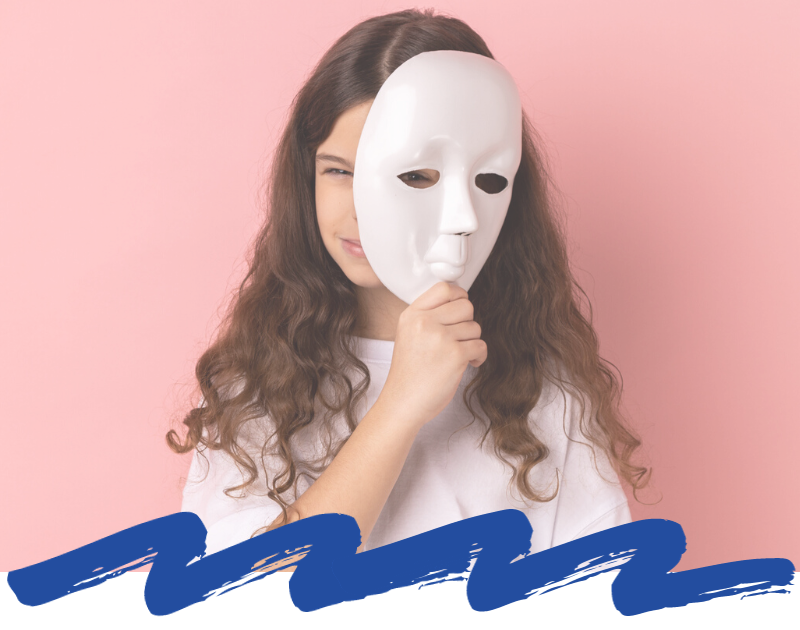When you think about autistic masking behaviors or autistic camouflaging, what do you picture? A female? An adult? Maybe someone who has recently been diagnosed or identified as autistic and has just recently realized they’ve been masking their entire life?
Well, the reality is that autistic people of all ages and genders can mask. And yes, that includes young autistic children.
We know that masking is a learned coping and social survival strategy. One that can be done consciously or unconsciously by an autistic person.
It’s also a strategy that can be learned quite early (think early elementary years). So it’s not surprising to see young children masking their autistic traits at quite a young age.
For many parents, it’s important to know these signs, especially given that long term masking can lead to burnout or mental health problems, among many other things. So recognizing these signs is the first step towards knowing how to support the autistic child who masks.
But what are the signs of autism masking in children and how can you tell if a child is masking or not? What do you need to watch out for? Well, that’s what we’ll explore below.
How Can You Tell if a Child is Masking?
To know if your autistic child is masking or not, it might be helpful to consider the following questions first:
If you answered yes to most of these questions, then your child is likely masking. And there are likely a multitude of reasons for why they’re masking. For instance, they might be trying to avoid social rejection and are trying to fit in. But let’s take a closer look at what masking might look like.
Example Signs of Autism Masking in Children
If you suspect that your autistic child might be masking, it can be helpful to look at the more specific signs or traits that you might notice. In particular, it’s good to know what signs are more specific to autistic kids versus adults. After all, adults have more time to hone their craft, so to speak. Or they might be more subtle than children.
You might notice these signs at home, in the classroom, during therapy sessions, in different social situations, or in other environments. The key point to remember here is that these signs will vary from situation to situation, just like the signs of masking will vary from child to child.
You should also keep in mind that these signs of autism masking in children may be subtle or vary in intensity. So sometimes they might be super obvious and easy to pick up on. And other times? Not so much.
Keeping the above points in mind, here are some signs of masking that you might notice in your autistic child:
Now, obviously, this list of signs isn’t exhaustive (nor are these traits or signs exclusive to autistic masking), but it should give you a basic idea of what to look out for.
It’s also worth noting that, if you’re here reading this list, you likely already suspect that your child might be masking. Perhaps you’ve noticed some slightly different signs that aren’t included on this list and that’s okay. Remember, everyone masks differently and it varies depending on the situation.
A Quick Recap: Signs of Autistic Masking in Children
When you notice that your child seems to be a completely different child in other environments versus when they’re at home, they might be masking.
So you might notice more meltdowns, lots of dysregulation, forced eye contact, a reliance on memorized scripts, mood or behavior changes, and more. These signs might be subtle and hard to pick up on. Or, they might be intense and super easy to spot.
Regardless, it’s important to be able to recognize these signs of autism masking in children, especially if you want to be able to support your autistic child in a variety of settings or situations. And hopefully you now have a better idea of what to look out for.
This content was originally published here.
